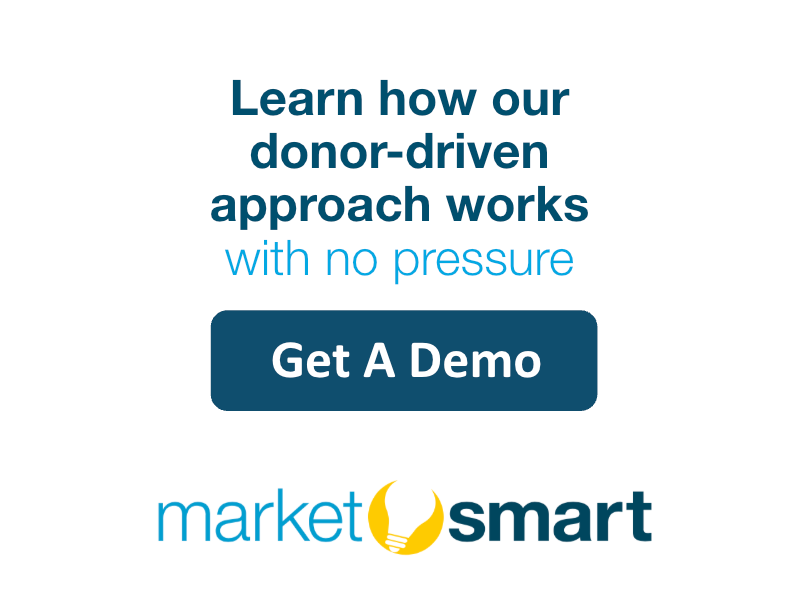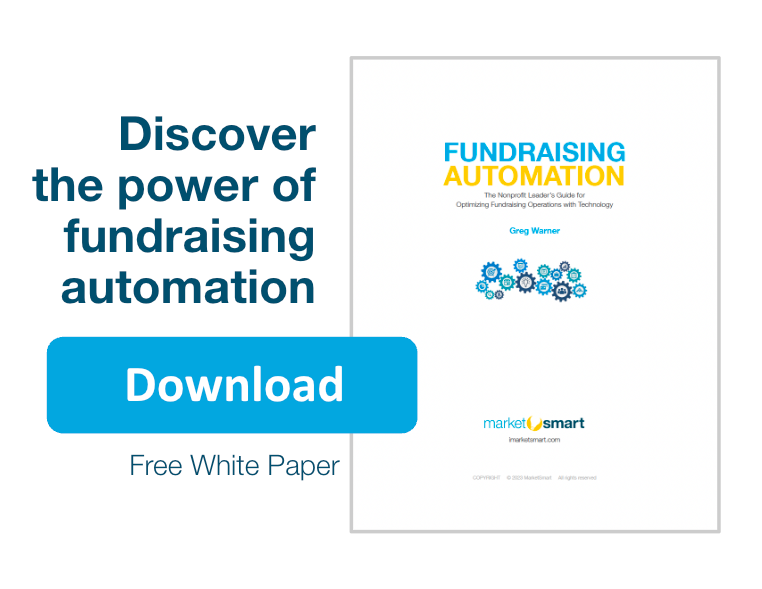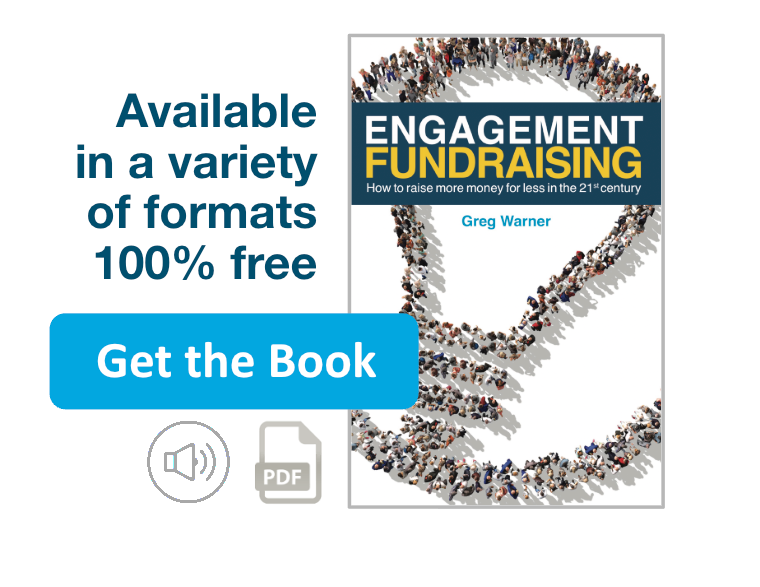What’s the hardest thing about bringing up legacy giving with an aging and loyal donor or supporter? Death. Focusing on that tends to trigger the avoidance of giving a legacy gift. You need a legacy giving strategy that goes the other way. Something that gets the donor to think positively about the idea of leaving a large gift to your charity in their will or estate plan.
Well – we’ve got one, and it’s backed by research. In fact, it has been studied with numerous variations by renowned major gifts researcher Dr. Russell James, and no matter how he varied the details, it still worked as long as it retained its core elements.
We’ll get to this excellent legacy giving strategy in a moment. But first, let’s be sure we understand why this strategy works so well. To do that, we have to be clear about what makes legacy giving unique.
Why Is Legacy Gift Fundraising Unique?
Because legacy gifts are given after the donor dies, there is no need to send any communications about the impact of their gift after the gift has been given. Their heirs might appreciate that (or maybe not), but the donor obviously won’t need it.
So, what matters to a donor making a legacy gift?
Legacy giving is about what Dr. James calls ‘symbolic immortality.’ This desire arises from deep within the human heart. We want to live forever. Even though we know intellectually that we cannot, in practice we still look for ways to leave our mark on the world after we’re gone.
Legacy giving provides a terrific opportunity for a donor to do just that.
A legacy gift – if large enough – ensures a lasting impact that can in theory sustain itself perpetually. How can this be achieved? Because you can set it up like an endowment that pays out part of its proceeds every year, and invests the rest so the fund itself lives forever.
Suppose your charity receives a legacy gift of $500,000. If you can grow that by an average of 10%, you could take out $50,000 every year and it would last forever. That’s permanence. That’s symbolic immortality. That donor’s name will live forever within that charity and among the beneficiaries, volunteers, and other people who come in contact with them.
Legacy Giving Statistics – Why a Special Approach Is Needed
According to inheritance tax data, 60% of charitable gifts in estate plans and wills allot under 10% of their estates to charity. Combined, these 60% of legacy gifts account for just 3.8% of total charitable bequest dollars.
Do you see the significance of that?
That means the remaining 40% of legacy gift donors account for 96.2% of the total dollars given after death. So most of the money is coming from a small percentage of legacy donors.
Those are the gifts you want the most. And to get those gifts, you need a special legacy giving strategy.
How to Bring Up Legacy Giving without Death
What you want to do is figure out a way to describe a personally meaningful outcome for the donor when they give a legacy gift. They need something to visualize, some way to picture the idea of the permanence their gift represents.
Dr. James calls this the ‘victory preface.’ The best victory preface he found is called the 4S Method. It was developed by Jeff Comfort, the Vice President of Principal Gifts and Gift Planning at Oregon State University.
Let’s explore the 4S Method.
4S Method – Legacy Giving Strategy
The 4S Method goes like this:
Story.
Story.
Story.
Shut up.
In other words, you want to combine three related stories, telling them back to back to back. After that, be quiet and let the donor ruminate on it. The key is, once again, to make sure these stories aren’t about death.
The best stories will be about another legacy giving supporter and how their gift so perfectly expressed their identity and filled them with joy.
This works because hearing a story about another legacy donor gives this supporter something positive to visualize. They can now see themselves doing what that person did. That person is like them, and that person has achieved symbolic immortality. Their gift is still impacting people’s lives through this nonprofit. And look – even now we’re still talking about them.
This takes the supporter’s mind completely off the topic of death while fixating them on the idea of a legacy gift.
Why the silence?
Because silence is a fundraising strategy. You’ve laid something out that challenges the donor. It forces them to consider taking an action. That action might be risky, dangerous, uncertain. In other words, it’s dramatic, and every great story needs drama. Even near the end of their lives, people still want drama, and they want to advance their own personal hero story. They still care about that.
Now, they are faced with the opportunity not just for symbolic immortality, but heroic immortality. They will be forever remembered as a person who did something good for other people.
That’s a powerful and emotional motivation.
The silence allows the supporter to swim around in all the thoughts and emotions around what you have presented.
So sit back. Take a drink. Count to ten in your head. Do whatever you can to let that silence linger for a good while, hopefully until they break the silence and continue the conversation. If it starts to feel like they may not know what to say, trying using one of these legacy gift questions.
4S Legacy Giving Strategy Example
Here’s a short example of the 4S Method from Dr. James to illustrate:
“Oh, and Jon Smith did a neat thing. Did you know Jon? He graduated two years before you. No? Well, Jon spent his career helping other people get their finances in order. And, he recently signed a new will that one day will endow a permanent scholarship for our financial planning students!”
See the three stories in there?
The first one is about Jon, his time at college, and his graduation. Tell a brief story of the life of the legacy donor you want to talk about with your supporter. You can fill it out more than this example does to make it more relatable. If there is any personal connection between your supporter and the donor in the story, use it.
The next story describes his career as a financial advisor. He cared about helping people with their money. He had a great career and accomplished a lot. Describe something about the professional life or philanthropic bent that guided your legacy donor, and make sure it includes details related to their identity – wanting to help people.
The last story shows how the legacy donor achieved permanence through a scholarship that will live on forever as an endowment. Share the details of your donor’s gift, what it meant to them, and what it will accomplish.
Those are your three stories. Tell them all at once, one after the other. Come prepared to this meeting, already knowing the stories of the legacy donor you plan to share with this supporter.
And then? Shut up. Let the supporter think about it for a good while – long enough for some discomfort to creep in. You want them to be the one to take the next step in the conversation, because this will reveal where they are with regard to making a legacy gift.
Dr. James tested the 4S Method with all types of stories, changing the details every time. He kept the core elements – focus on how the legacy gift expressed the identity of the donor and helped them achieve symbolic immortality. But beyond that, the details don’t matter. The story will fit your charity and your mission’s details.
It works. Use this legacy giving strategy, and you’ll win more transformational legacy gifts.
Related Posts:
- Too much major and legacy gift fundraising is focused on HOW, when it should be focused on WHY
- Introducing the Most Effective Legacy Gift Fundraising Strategy You’ve Never Heard Before
- The 4 Types of Legacy Gift Asks (Solicitations)




